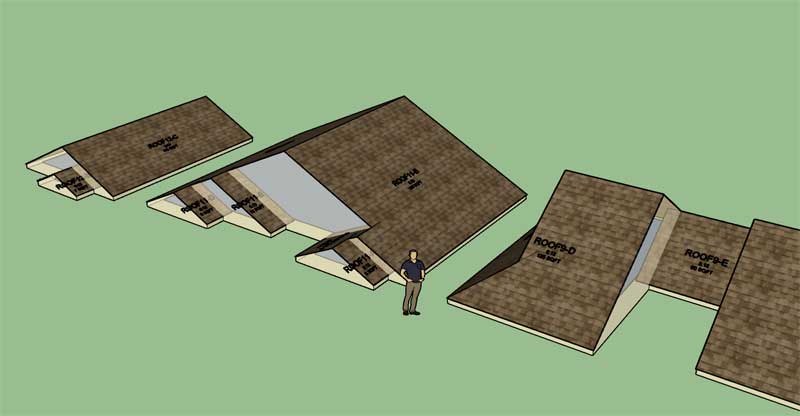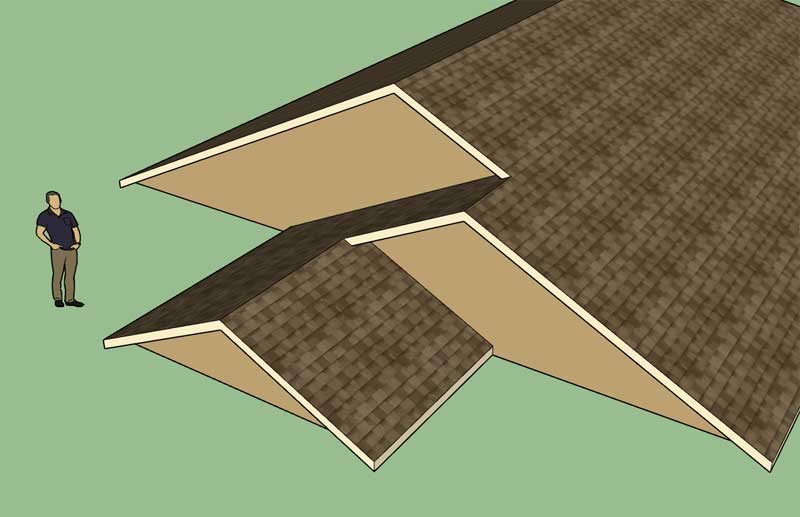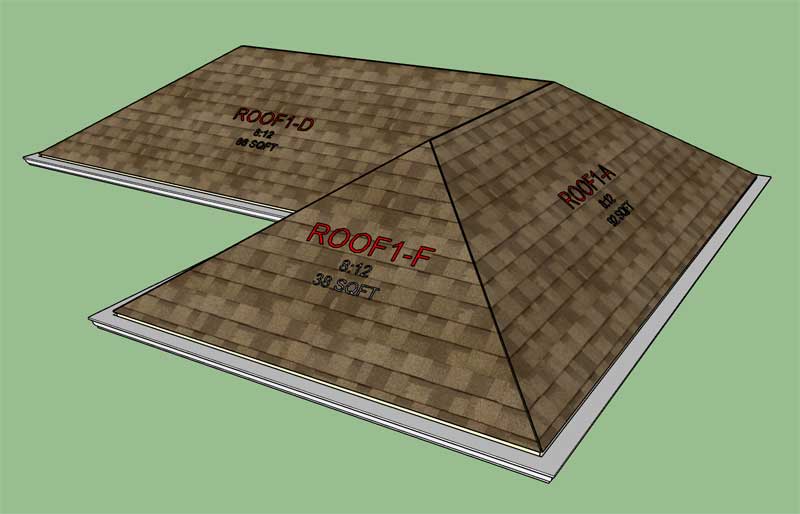I will be out for 2 - 3 days however you can probably reach me by phone if it is an emergency, however I won't have any computer in front of me so it may be hard to do any significant support or troubleshooting.
I had an interesting conversation with a client today and he wondered if I disliked engineering, and that is why I am now developing plugins. I do not dislike engineering, in fact I really would like to get back into it but I would like to get back into it with SketchUp and my plugins leading the charge.
The one problem I have with the way residential engineering is done (or at least the way I was doing it), is the lack of automation. Yes, there are plenty of tools out there (spreadsheets, Forte etc...) that help with the calculations, however I want something even more streamlined. I want a program that already takes a 3D model of a structure and then is somehow smart enough to propagate the loads throughout that structure and run all the numbers automatically. This is the way engineering should be done in the 21st century, we have the computers, and yes we have the technology, we just need to leverage it so that we can stop wasting our time on tedious chores.
To be honest, most of residential engineering is quite mundane. There is some engineering judgement that comes into play in certain situations however for the most part it is merely taking some inputs and running them through a number of AWC and ASCE equations and giving the result a GO or NO-GO. This is exactly what computers were built for.
This is my **vision** for the engineering module and what it should be able to do:
I should be able to enter the site criteria for a project and then with the push of a single button crunch all of the engineering calcs for that model. The items that fail will be flagged. I modify those items accordingly (upgrade a header to a larger size), and then run the numbers again, until everything passes. I then click the generate report, a PDF is generated. I review it one last time, checking for errors and making sure all the inputs and outputs look reasonable and consistent, and then print out a paper copy, and stamp and sign it.
I've decided my time is much better spent developing a proper solution like this rather than continuing my practice of manually crunching numbers for local residential clients. Undoubtedly, I would make more money working on local engineering projects than I would make working on just these plugins (full time). In fact, I even turned down an employment opportunity last year for a really nice, six figure income so that I could specifically pursue the Wall plugin full time.
Currently I'm probably only making only about half of what I could make working strictly as a conventional engineer or corporate drone, but with me it has never been about the money. One has to look at the big picture with these things. I love what I do, I have full ownership, and I am able to help hundreds, maybe thousands of architects, engineers and designers rather than just a handful of local clients. Every day I wake up I get to decide what needs to done, I control the direction I take, even though my customers do guide me. I am also able to leverage both my love for programming and my love of engineering. I didn't choose this path, it chose me.
I had an interesting conversation with a client today and he wondered if I disliked engineering, and that is why I am now developing plugins. I do not dislike engineering, in fact I really would like to get back into it but I would like to get back into it with SketchUp and my plugins leading the charge.
The one problem I have with the way residential engineering is done (or at least the way I was doing it), is the lack of automation. Yes, there are plenty of tools out there (spreadsheets, Forte etc...) that help with the calculations, however I want something even more streamlined. I want a program that already takes a 3D model of a structure and then is somehow smart enough to propagate the loads throughout that structure and run all the numbers automatically. This is the way engineering should be done in the 21st century, we have the computers, and yes we have the technology, we just need to leverage it so that we can stop wasting our time on tedious chores.
To be honest, most of residential engineering is quite mundane. There is some engineering judgement that comes into play in certain situations however for the most part it is merely taking some inputs and running them through a number of AWC and ASCE equations and giving the result a GO or NO-GO. This is exactly what computers were built for.
This is my **vision** for the engineering module and what it should be able to do:
I should be able to enter the site criteria for a project and then with the push of a single button crunch all of the engineering calcs for that model. The items that fail will be flagged. I modify those items accordingly (upgrade a header to a larger size), and then run the numbers again, until everything passes. I then click the generate report, a PDF is generated. I review it one last time, checking for errors and making sure all the inputs and outputs look reasonable and consistent, and then print out a paper copy, and stamp and sign it.
I've decided my time is much better spent developing a proper solution like this rather than continuing my practice of manually crunching numbers for local residential clients. Undoubtedly, I would make more money working on local engineering projects than I would make working on just these plugins (full time). In fact, I even turned down an employment opportunity last year for a really nice, six figure income so that I could specifically pursue the Wall plugin full time.
Currently I'm probably only making only about half of what I could make working strictly as a conventional engineer or corporate drone, but with me it has never been about the money. One has to look at the big picture with these things. I love what I do, I have full ownership, and I am able to help hundreds, maybe thousands of architects, engineers and designers rather than just a handful of local clients. Every day I wake up I get to decide what needs to done, I control the direction I take, even though my customers do guide me. I am also able to leverage both my love for programming and my love of engineering. I didn't choose this path, it chose me.









